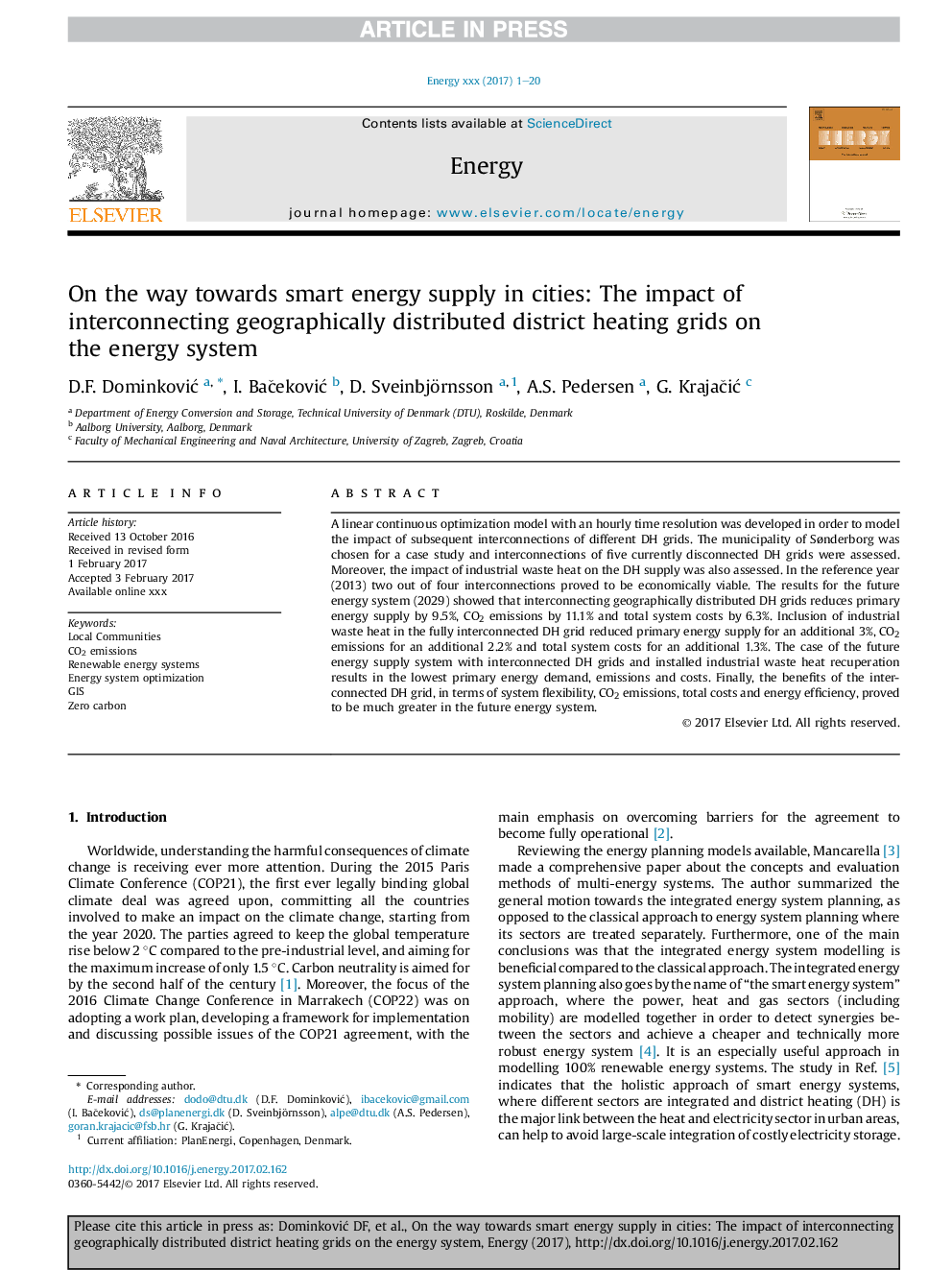| Article ID | Journal | Published Year | Pages | File Type |
|---|---|---|---|---|
| 8072805 | Energy | 2017 | 20 Pages |
Abstract
A linear continuous optimization model with an hourly time resolution was developed in order to model the impact of subsequent interconnections of different DH grids. The municipality of Sønderborg was chosen for a case study and interconnections of five currently disconnected DH grids were assessed. Moreover, the impact of industrial waste heat on the DH supply was also assessed. In the reference year (2013) two out of four interconnections proved to be economically viable. The results for the future energy system (2029) showed that interconnecting geographically distributed DH grids reduces primary energy supply by 9.5%, CO2 emissions by 11.1% and total system costs by 6.3%. Inclusion of industrial waste heat in the fully interconnected DH grid reduced primary energy supply for an additional 3%, CO2 emissions for an additional 2.2% and total system costs for an additional 1.3%. The case of the future energy supply system with interconnected DH grids and installed industrial waste heat recuperation results in the lowest primary energy demand, emissions and costs. Finally, the benefits of the interconnected DH grid, in terms of system flexibility, CO2 emissions, total costs and energy efficiency, proved to be much greater in the future energy system.
Keywords
Related Topics
Physical Sciences and Engineering
Energy
Energy (General)
Authors
D.F. DominkoviÄ, I. BaÄekoviÄ, D. Sveinbjörnsson, A.S. Pedersen, G. KrajaÄiÄ,
